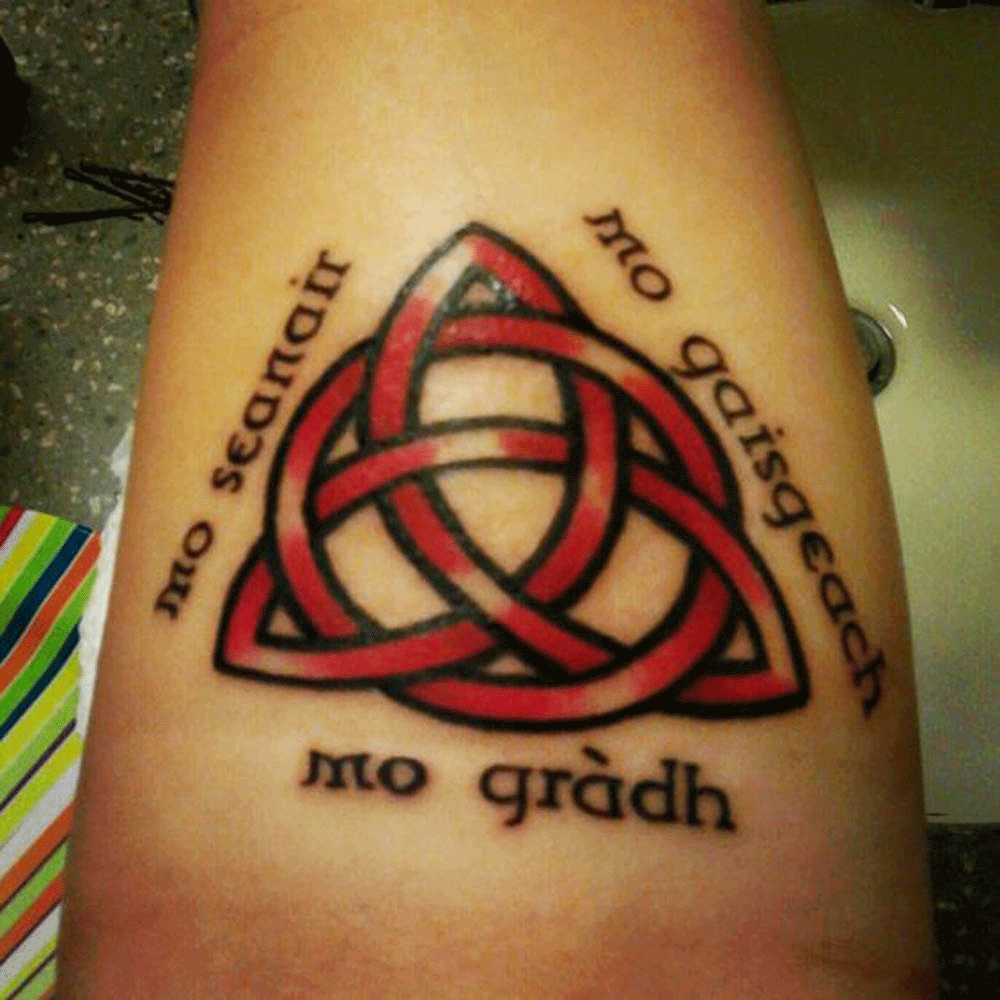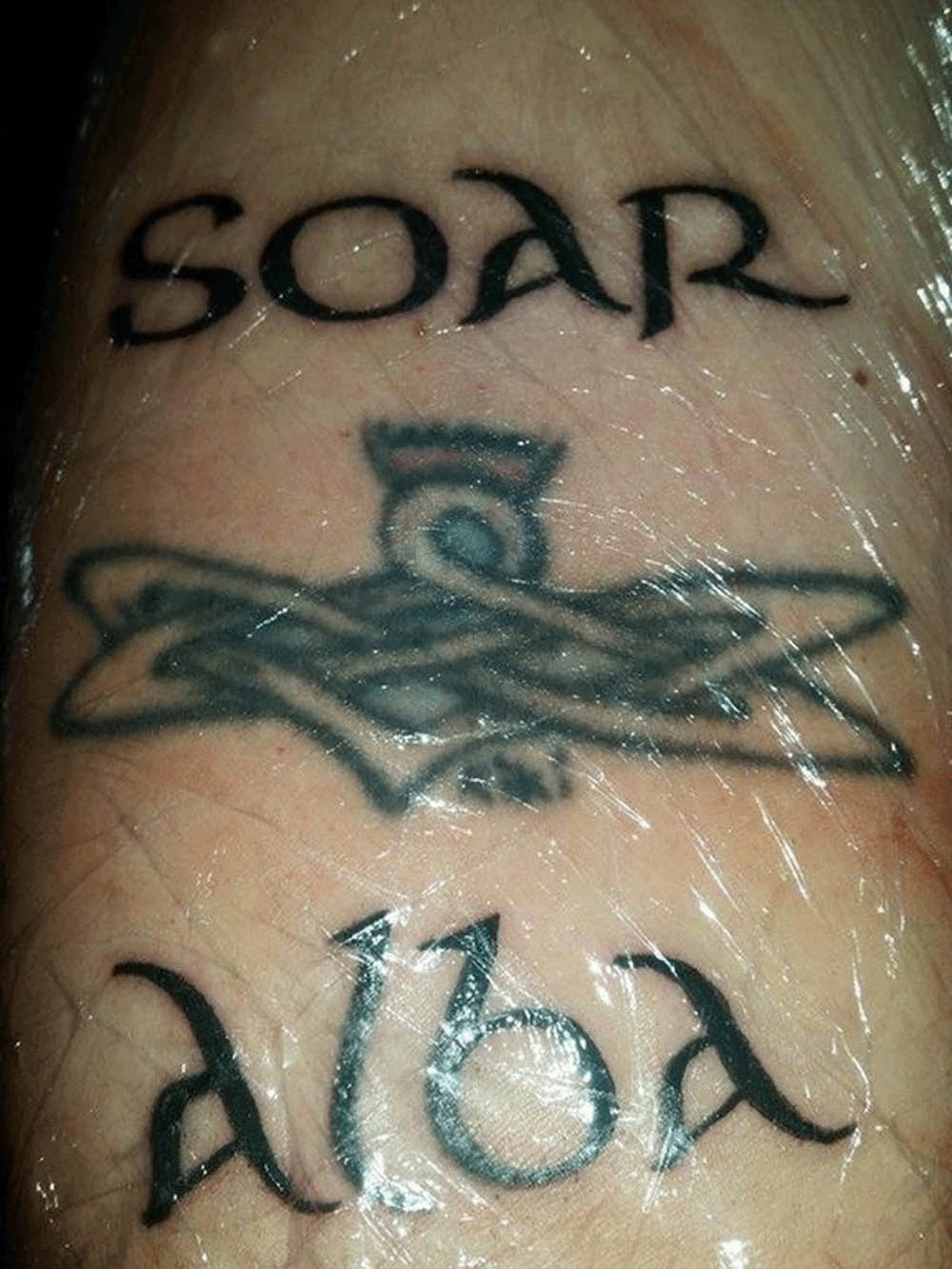A SERIES of hilarious and toe-curling Gaelic tattoo disasters have been unveiled by an expert in the notoriously tricky language.
Amateur translators have been left with permanent “train wreck” tattoos – implying their grandfather is their lover, telling partners “I don’t love you” and declaring themselves “sore” rather than “free”.
Others are left with gibberish inked on their skin, including: “Report out of the people.”
Now Dr Emily McEwan-Fujita has published a book specifically aimed at helping tattoo fans with a passion for Gaelic to avoid such blunders.

Gaelic tattoos are a popular choice for body art enthusiasts in Scotland and abroad – where many identify as immigrants of Scottish descent.
But at present only 1% of the Scottish population can speak the language with anything approaching fluency – and only a handful of those in other countries have any ability at all.
Dr McEwan-Fujita, 45, a Canada-based Gaelic scholar, has included in “The Scottish Gaelic Tattoo Handbook” many “authentic words and phrases”.
The academic has collected numerous examples of horribly mistranslated Gaelic tattoos.
One shows a Celtic knot design, with the words “Mo seanair, mo gaisgeach, mo gràdh” – which the girl thinks means “my grandfather, my hero, my love.”
But a poor grasp of the finer points of Gaelic grammar and the implied meaning of the words has left it seeming as if her beloved grandfather is actually her lover.

Another tattoo she has pointed out is meant to read “Tha gaol agam ort” – meaning “I love you”.
But a careless tattoo artist has used a font which makes the opening letter “T” look like a “C”.
According to her this gives the “hilariously bad“ result of “I do not love you” – the exact opposite of the intended meaning of the body art.
Another independence-inspired individual wanted a tattoo reading “Alba Saor” – “Free Scotland”.
But a spelling mistake has rendered “Saor” “Soar”, and the artist has stylised the tattoo such that “Saor” comes before, rather than after “Alba”.

Dr McEwan-Fujita says when the word “free” is put first it becomes a command, and this particular use of the word is spelled as though it is addressed to a person familiar to the speaker.
She says “It’s a lovely sentiment”, but due to the spelling and grammatical errors it says something like: “Dude, libarete (CORR) Scotland!”
One more is from an ex-US paratrooper who hoped to honour his Scottish ancestry and the family history of serving in the regiment by getting a tattoo with its insignia and the words “family tradition”.
But she says the words used – “aithris a na dream” are in fact closer to the meaningless phrase “Report out of the people”.
She explains: “This is what happens when you try to look up English words in a Gaelic dictionary and then string them together according to English grammar rules.”
Discussing the book, Dr McEwan-Fujita said: “I started to notice that people were finding my blog through searches for Gaelic tattoo translations.
“And then I started to see photos of some pretty bad Gaelic tattoos and that connected in my mind with the stories going around on social media about bad Chinese tattoos and bad Hebrew tattoos.”
As an expert – she is frequently asked to translate for tattoos.
But, she said: “Having to talk someone out of getting something inadvisable just puts fluent speakers in a really awkward position, because the person who wants the tattoo is so keen, and has no clue that what they’ve asked for is totally inappropriate, or impossible to translate nicely.
“Some English concepts sound really clunky in Gaelic, and vice versa. Someone even asked me for Gabrielle song lyrics the other day.”
But the worst example of tattoo translation she has ever was in Irish Gaelic – a language relatively similar to is Scottish counterpart.
She explained: “A young woman was in the straight-edge subculture and wanted her tattoo to say drug free.’”
“But what she ended up with was more like ‘free drugs’ – with spelling and grammar mistakes. It was an enormous tattoo across her upper back.”
Dr McEwan-Fujita is based in Nova Scotia – one of the few places outside Scotland with a community of Gaelic speakers.
The island – on Canada’s east coast – was settled by Scottish immigrants in the 17h century, and around 1,300 of the 940,000 inhabitants still speak the language today.
Gaelic blunders are not limited to ill thought out tattoos.
In August it was revealed that visitors to a popular Scottish holiday spot have unwittingly been welcomed to “Penis Island” for nearly a decade because of a council’s grammar error.
A poorly translated sign which was meant to read “Welcome to the beauty of the Isle of Bute” had Gaelic speakers in stitches after they found it read “Welcome to the beauty of Penis Island.”
One missing accent on a letter changed Bhòid, meaning Bute, to Bhoid – pronounced bod – the word for the male member.

